 W
WItalian submarine Alagi was an Adua-class submarine built in 1930s serving in the Regia Marina during World War II. She was named after the Amba Alagi mountain in Ethiopia.
 W
WUSS Albert W. Grant (DD-649) was a Fletcher-class destroyer in the United States Navy during World War II. She was the only ship named for Vice Admiral Albert W. Grant (1856–1930), an admiral during World War I.
 W
WUSS Atlanta (CL-51) of the United States Navy was the lead ship of the Atlanta class of eight light cruisers. She was the third Navy ship named after the city of Atlanta, Georgia. Designed to provide anti-aircraft protection for US naval task groups, Atlanta served in this capacity in the naval battles Midway and the Eastern Solomons. Atlanta was heavily damaged by Japanese and friendly gunfire in a night surface action on 13 November 1942 during the Naval Battle of Guadalcanal. The cruiser was sunk on her captain's orders in the afternoon of the same day.
 W
WItalo Balbo was an Italian fascist politician and Blackshirts' leader who served as Italy's Marshal of the Air Force, Governor-General of Libya and Commander-in-Chief of Italian North Africa. Balbo was described as the "heir apparent" to Italian dictator Benito Mussolini, often seen as one of his most probable successors.
 W
WHMS Bicester (pennant number L34) was an escort destroyer of the Type II Hunt class. The Royal Navy ordered Bicester's construction three months after the outbreak of the Second World War. Hawthorn Leslie & Co. laid down her keel at their Tyne yard on 29 May 1940, as Admiralty Job Number J4210. The ship was named after a fox hunt in Oxfordshire.
 W
WBéchir Bouazzat was a French modern pentathlete of Tunisian descent. He competed at the 1936 Summer Olympics. He was killed during World War II.
 W
WUSS Brant (AM-24) was a Lapwing-class minesweeper in the United States Navy during World War II. She was named by the U.S. Navy for the brant, a small goose.
 W
WHMS Britomart was a Halcyon-class minesweeper of the Royal Navy. She served during the Second World War and was sunk in 1944 in a friendly fire incident. The actor Robert Newton served aboard her.
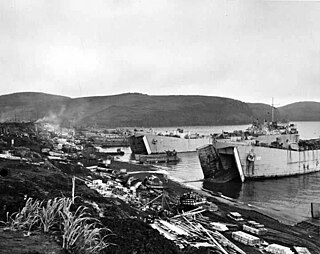 W
WOperation Cottage was a tactical maneuver which completed the Aleutian Islands campaign. On August 15, 1943, Allied military forces landed on Kiska Island, which had been occupied by Japanese forces since June 1942.
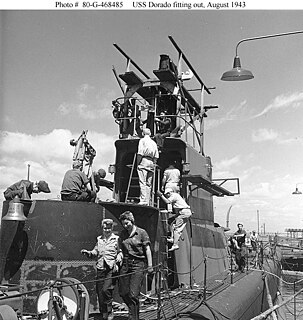 W
WUSS Dorado (SS-248), a Gato-class submarine, was the first submarine of the United States Navy to be named for the dorado.
 W
WExercise Tiger, or Operation Tiger, was one of a series of large-scale rehearsals for the D-Day invasion of Normandy, which took place in April 1944 on Slapton Sands in Devon. Coordination and communication problems resulted in friendly fire deaths during the exercise, and an Allied convoy positioning itself for the landing was attacked by E-boats of Nazi Germany's Kriegsmarine, resulting in the deaths of at least 749 American servicemen.
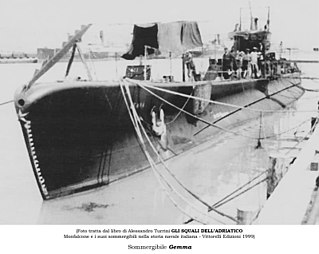 W
WItalian submarine Gemma was a Perla-class submarine built for the Royal Italian Navy during the 1930s. Her name in Italian means a gemstone or jewel.
 W
WHMS Hussar was a Royal Navy Halcyon-class minesweeper of World War II.
 W
WI-6 was a J2 type submarine built by Kawasaki, Kobe, for the Imperial Japanese Navy in the 1930s. She was a large cruiser submarine that entered service in 1935 and served in the Second Sino-Japanese War and World War II. During the latter conflict she operated in support of the attack on Pearl Harbor, torpedoed the aircraft carrier USS Saratoga (CV-3), conducted anti-shipping patrols in the Indian Ocean and South Pacific Ocean, and took part in the Aleutian Islands campaign and New Guinea campaign before she was sunk in June 1944.
 W
WI-7 was a J3 type submarine built by Kawasaki, Kobe, for the Imperial Japanese Navy in the 1930s. She was a large cruiser submarine that entered service in 1935 and served in World War II. She operated in support of the attack on Pearl Harbor, conducted anti-shipping patrols in the Indian Ocean, supported the Indian Ocean raid, and took part in the Guadalcanal campaign and the Aleutian Islands campaign. She was wrecked in the Aleutian Islands after a lengthy battle with the destroyer USS Monaghan (DD-354) in June 1943..
 W
WThe Imber friendly fire incident took place on 13 April 1942 at Imber in the English county of Wiltshire during the Second World War. One of the Royal Air Force fighter aircraft taking part in a firepower demonstration accidentally opened fire on a crowd of spectators, killing 25 and wounding 71. Pilot error and bad weather were blamed for the incident.
 W
WHMS Jason was a Halcyon-class minesweeper. She was named after the hero in Greek mythology and was the sixteenth Royal Navy ship to carry the name Jason. She was laid down on 12 December 1936, launched on 6 October 1937, and was completed on 9 June 1938. She survived the Second World War and was sold in 1946 to become a cargo ship. She was eventually broken up in 1950. Her pennant number was originally N99, but was changed to J99 in May 1940.
 W
WORP Jastrząb ("Hawk") was a former S-class submarine, originally of the United States Navy, in Polish service between 1941 and 1942, when she was lost to friendly fire.
 W
WThe Battle of Los Angeles, also known as the Great Los Angeles Air Raid, is the name given by contemporary sources to a rumored attack on the mainland United States by Japan and the subsequent anti-aircraft artillery barrage which took place from late 24 February to early 25 February 1942, over Los Angeles, California. The incident occurred less than three months after the United States entered World War II in response to the Imperial Japanese Navy's surprise attack on Pearl Harbor, and one day after the bombardment of Ellwood near Santa Barbara on 23 February. Initially, the target of the aerial barrage was thought to be an attacking force from Japan, but speaking at a press conference shortly afterward, Secretary of the Navy Frank Knox called the purported attack a "false alarm". Newspapers of the time published a number of reports and speculations of a cover-up.
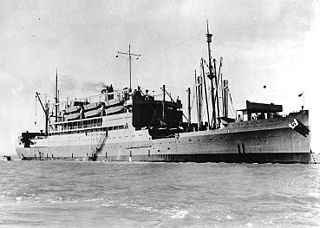 W
WUSS McCawley (APA-4) was a McCawley-class attack transport that served with the United States Navy during World War II. Named after Charles G. McCawley, eighth Commandant of the U.S. Marine Corps, she was the lead ship in her class.
 W
WLesley James McNair was a senior United States Army officer who served during World War I and World War II. He attained the rank of lieutenant general during his life; he was killed in action during World War II, and received a posthumous promotion to general.
 W
WHNoMS Nordkapp was the lead ship of the Nordkapp class of fishery protection vessels. She was launched 18 August 1937 at Horten naval shipyard, with yard number 123. She had one sister ship, HNoMS Senja. Nordkapp was named after the North Cape in Finnmark. As was typical of her class, Nordkapp was very unstable in rough seas and was viewed from the beginning as a second-rate vessel. Nordkapp sailed throughout the Second World War and saw service in several theatres.
 W
WHMS Oxley was an Odin-class submarine of the Royal Australian Navy (RAN) and Royal Navy (RN).
 W
WPerle was a Saphir-class submarine built for the French Navy in the mid-1930s. Laid down in 1931, she was launched in July 1935 and commissioned in March 1937. In November 1942, after Operation Torch, Perle joined the Allied fleet. While returning from refitting in the United States, Perle was mistaken for a U-boat by Allied aircraft and sunk.
 W
WUSS Porter (DD-356) was the lead ship of her class of destroyers in the United States Navy. She was the third Navy ship named for Commodore David Porter and his son, Admiral David Dixon Porter.
 W
WPT-346 was an 80 ft Electric Launch Company (Elco) motor torpedo boat which suffered the worst PT-boat friendly-fire casualties of World War II, with nine men killed and nine wounded by airstrike.
 W
WUSS R-19 (SS-96) was an R-class coastal and harbor defense submarine of the United States Navy.
 W
WUSS S-26 (SS-131) was an S-class submarine of the United States Navy. She was lost in a collision with a friendly escort ship in February 1942.
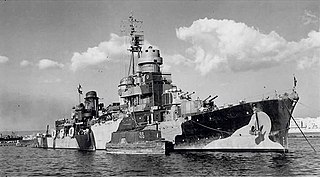 W
WOperation Scylla was a successful Italian Navy attempt to transfer the light cruiser Scipione Africano from its base in the Tyrrhenian Sea to Taranto, in the Ionian Sea, during the Allied invasion of Sicily in July 1943, in the course of World War II. The operation is notable for the night engagement between the Italian cruiser and four British motor torpedo boats during the passage of the strait of Messina, in the early hours of 17 July 1943. The action also marked the only time that an Italian warship made an effective combat use of surface radar in World War II.
 W
WUSS Seawolf (SS-197), a Sargo-class submarine, was the second submarine of the United States Navy named for the seawolf.
 W
WSpreewald was a German passenger-carrying freighter built in 1922 by Deutsche Werft at Hamburg for the Hamburg America Line. The ship was renamed Anubis in 1935, but reverted to Spreewald in 1939. On 31 January 1942 when returning to Germany in disguise, she was sunk by U-333.
 W
WHMS Sunfish was a Royal Navy S-class submarine which was launched on 30 September 1936 and served in the Second World War. Sunfish is one of 12 boats named in the song Twelve Little S-Boats.
 W
WHMS Unbeaten was a U-class submarine, of the second group of that class, built by Vickers Armstrong, Barrow-in-Furness. She was laid down on 22 November 1939 and was commissioned on 10 November 1940. So far she has been the only ship of the Royal Navy to bear the name Unbeaten.
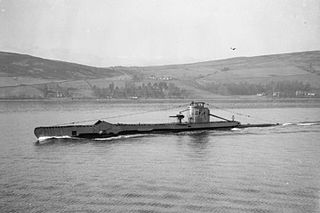 W
WHMS Unison (P43) was a Royal Navy U-class submarine built by Vickers-Armstrong at Barrow-in-Furness, and part of the third group of that class. So far she has been the only ship of the Royal Navy to bear the name Unison. Prior to receiving the name, she bore the pennant number P43, and was unofficially known as Ulysses.
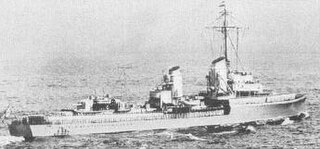 W
WOperation Wikinger was a sortie into the North Sea by German World War II destroyers of the Kriegsmarine, in February 1940. During this operation, poor inter-service communication and cooperation between the Kriegsmarine and the Luftwaffe and inexperience resulted in the loss of two German ships, despite the lack of Allied forces, through friendly fire bombing and German or British mines.
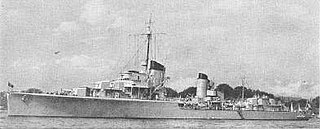 W
WThe German destroyer Z1 Leberecht Maass was the lead ship of her class of four destroyers built for the German Navy during the mid-1930s. Completed in 1937, two years before the start of World War II, the ship served as a flagship and spent most of her time training although she did participate in the occupation of Memel in early 1939.